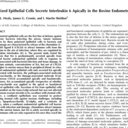[Correlation between thigh muscle magnetic resonance imaging findings and clinical features of congenital muscular dystrophies: a preliminary study].
Raktažodžiai
Santrauka
Objective: To analyze the clinical and magnetic resonance imaging (MRI) features of congenital muscular dystrophy (CMD) to improve the diagnostic level. Method: Clinical manifestations and thigh muscle MRI results of 8 cases of CMD diagnosed on genetic level from April 2013 to November 2015 were investigated. MRI was performed on the thigh muscles of all cases. Fatty infiltration of different muscles described in T1WI was graded to evaluate. Clinical symptoms and signs, as well as muscle MRI features were analyzed by statistical description. Result: Among these 8 cases, 2 cases were diagnosed with Ullrich congenital muscular dystrophy (UCMD), 1 case had rigid spine with muscular dystrophy type 1 (RSMD1), 1 case had LMNA related muscular dystrophy (L-CMD), 1 case had congenital muscular dystrophy 1C (MDC1C) and 3 cases had congenital muscular dystrophy 1A (MDC1A), with 4 were males and 4 females, aged from 0.9 year to 4.8 years (median age was 2.2 years). All of these 8 cases presented with muscle weakness and hypotonia from birth to within the first six months, together with delayed motor development and joint contractures. Some cases had spinal deformity or skin changes. Various degrees of fatty infiltration in gluteus maximus and thigh muscles were shown in all of the cases, and differences among CMD subtypes in the form of fatty infiltration were detected; muscle edema was present in 5 cases, and muscle atrophy in 7 cases. However, none of them has muscle hypertrophy. Semimembranous muscle absence was detected in 1 case. Conclusion: The clinical manifestations and thigh muscle MRI findings of CMD have some features, and vary in certain CMD subtypes. MRI examination combined with clinical features may provide useful information to select appropriate genetic or other diagnostic techniques, which may help clinicians to make accurate diagnosis.


